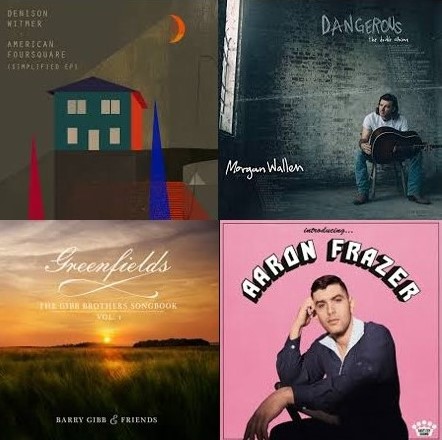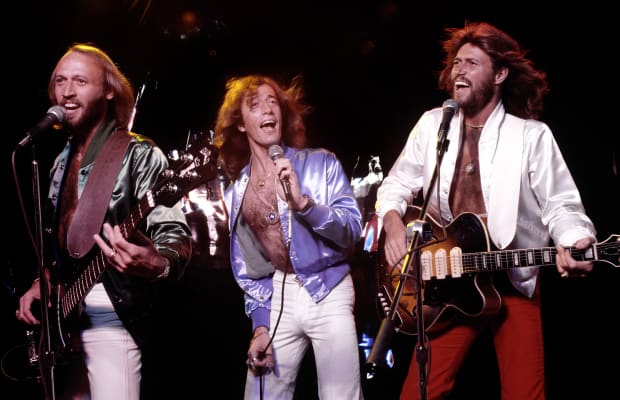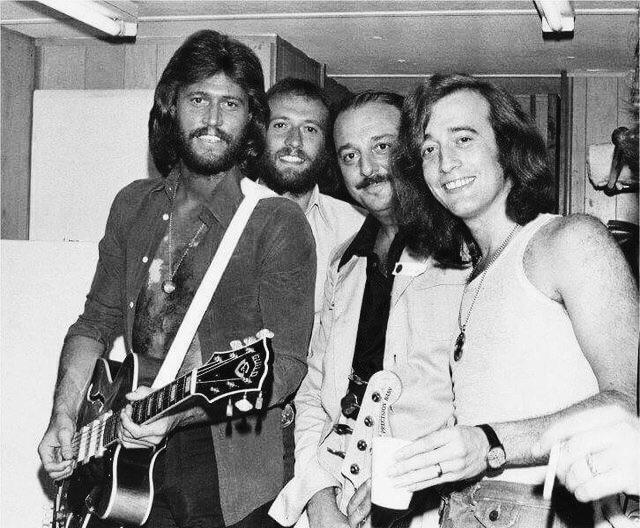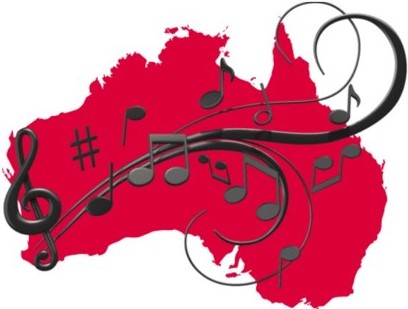As we start a new week, it’s time for another post of my irregular music history feature, the blog’s longest running series I started back in July 2016. It was my seventh post, and today is the 76th installment – yes, I had to count them all. Since the feature revolves around specific dates, this still leaves me with plenty of additional posts. With that said, let’s take a look at select happenings in the world of music on May 13.
1955: A performance by Elvis Presley in Jacksonville, Fla. led to what became known as the “first Presley riot.” During the show, Elvis told the screaming girls in the audience he’d “see them backstage after the show.” Apparently, some fans took the tease a bit too literal and rushed toward the stage when the spectacle was over. Some also corned Elvis in his dressing room and tore off his clothes, hoping to grab a souvenir. Remarkably, this all happened before he had ever appeared on national TV. Also in attendance was a man who called himself Colonel Tom Parker and would become Presley’s manager after he had witnessed his potential. Here’s an interview of Presley conducted on May 13, 1995 by Mae Boren Axton, which briefly references the “riot.” It was the first time Axton met Presley, and she ended up giving him her song Heartbreak Hotel. It worked out nicely for both of them, becoming Presley’s first no.1 in the U.S. on the national pop charts
1966: The Rolling Stones released their single Paint It Black in the UK. It had first appeared in the U.S. on May 7. Credited to Mick Jagger and Keith Richards, the initial version was a much slower, conventional soul song. When during the recording session Bill Wyman started following around on an organ with a spoof of music played at Jewish weddings, Charlie Watts joined in, improvising the double-time drum pattern, echoing the rhythm heard in some Middle Eastern dances. Another notable feature of Paint It Black is the sitar played by Brian Jones, an instrument The Beatles had introduced to pop the year before on their song Norwegian Wood.
1970: Let It Be, Michael Lindsay-Hogg’s documentary about The Beatles and the making of their studio album of the same name, made its theatrical debut in New York City. The UK premiere followed a week later in London and Liverpool simultaneously. At the time, the film wasn’t particularly well received. In addition to poor technical and conceptual qualities, most of the criticism focused particularly on it as a document highlighting the fractured relationships within the band. Peter Jackson’s documentary TV series The Beatles: Get Back, which premiered in November 2021, helped update the record. It drew largely from unused footage and audio material originally captured for and recycled original footage from Hogg’s documentary. An updated version of that documentary, which was fully restored by Jackson, started streaming on Disney+ on May 8. “Let It Be is the climax of Get Back, while Get Back provides a vital missing context for Let It Be,” Jackson told Rolling Stone.
1978: Hawaiian vocalist, songwriter and actress Yvonne Elliman, who had gained initial prominence as part of the cast of Broadway musical production Jesus Chris Superstar, hit no. 1 in the U.S. on the Billboard Hot 100 with If I Can’t Have You. Co-written by Barry Gibb, Robin Gibb and Maurice Gibb of the Bee Gees, the catchy dance song was part of Saturday Night Fever, the soundtrack from the 1977 film of the same name, starring 23-year-old John Travolta. At that time, the Bee Gees dominated the U.S. pop charts. If I Can’t Have You knocked off Night Fever, another Bee Gees song from soundtrack, from the top spot, which had been at no. 1 for eight weeks.
1985: The Parents Music Resource Center (PMRC) held their first meeting at a church in Washington, D.C. Co-founded by Tipper Gore, wife of Senator and later Vice President Al Gore; Susan Baker, wife of Treasury Secretary James Baker; Pam Howar, wife of Washington realtor Raymond Howar; and Sally Nevius, wife of former Washington City Council Chairman John Nevius, the PMRC’s goal was to increase parental control over the access of children to music deemed to have violent, drug-related or sexual themes. Their influence led to a Senate hearing on September 19, during which John Denver, Frank Zappa and Dee Snider of Twisted Sister testified, opposing any kind of labeling, arguing any such regulation could lead to censorship. Two months later, the Recording Industry Association of America (RIAA), which represents most record companies, agreed to voluntarily place warning stickers on albums deemed offensive to avoid legislation.

Sources: Wikipedia; Songfacts Music History Calendar; Florida History Network; Rolling Stone; YouTube









